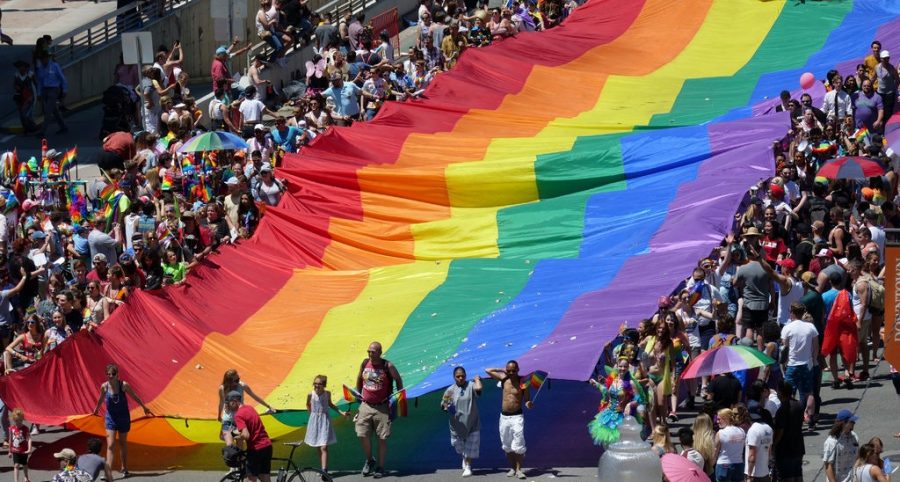The History of American Pride Month
June 25, 2021
The month of June is Pride month, a special recognition of those in the LGBTQ+ community to celebrate their identity. It is celebrated all over the world in various cities, but the movement began right here in the USA.
The history of Pride month and the LGBTQ+ movement began over 50 years ago during the Stonewall riots. A raid of the Stonewall Inn to arrest gay patrons turned into a violent counterattack against the homophobic policeforce. The riots lasted a few nights during the summer of 1959. This was not the first account of the gay community fighting against aggresive police actions, but it was the Stonewall Riots in Greenwich Village, New York City, that sparked the Pride movement.
The famous tradition of Pride Parades began in response to these riots after organizers used the momentum and resisting spirit to organize the first Pride march a year later, going from Christopher Street to Central Park. The marches continued into the next decade, gaining more and more participants and attention every year and eventually expanding into other cities across the country. The idea of “gay pride” also originated during this time, created as the antithesis to the sense of shame many members of the LGBTQ+ community felt over the years.
Today, Pride Parades are celebrated worldwide with extremely flamboyant and lively marches in many cities. Pride month happens in June to commemorate the Stonewall riots, which began in late June, but some cities such as Vancouver and Palm Springs celebrate at different times of the year due to weather conditions in their respective locations. Parades and events are organized by InterPride, who schedules events in nearby cities to happen at different times so people don’t have to choose. The International Gay and Lesbian Travel Association also has an organized calendar of all international pride events.
Although Pride parades and similar events can seem like a party and are meant to be a celebration for a community that has been heavily targeted and discriminated against, they are also a way to voice political concerns and advocate for LGBTQ+ rights. At the beginning of this movement in the 1970s, the marches were to protest against the police brutality and targeted homophobia of the gay community. Later on they served as opportunities to register new voters to advocate for LGBTQ+ issues during elections, and as a way to demand action against the HIV epidemic of the 1980s. The community experienced some victories in recent years with the national legislation legalizing same-sex marriage and the Bostock Supreme Court decision that stopped the hospital policy of turning away patients because they were transgender. Today, although the community has gained political and social rights, there are still ways to go. Activists continue to march to end workplace discrimination, serve openly in the miliary, and receive equal access to healthcare.
Another development during Pride month is the branding and involvement of large corporations. Many companies use their platform during this time to show their support for LGBTQ+ people and raise awareness on issues that affect the community. There is also a group of companies that use this month as an opportunity to capitalize on the attention the movement is getting and seem “woke” to sell more products. Many social media companies temporarily change their logo to rainbow during the month of June, and businesses will sell limited edition products, such as Burger King marketing the “Proud Whopper” in 2014. There is nothing inherently wrong with companies and celebrities using social media to voice their support and solidarity to the community during a time of celebration, but when the use of “Rainbow Capitalism” to make money through fake support, an issue arises. If companies or individuals aren’t allies during the other 11 months of the year, they’re not truly allies of the gay community.
Pride parades are meant as a way for members of the LGBTQ+ community to be themselves and not only be tolerated, but wholeheartedly embraced. If one identifies as straight, it is still okay to show up to parades and similar events, only if willing to accept everyone there, be educated, and take a back seat. Pride month is for members of the community, and although it is appreciated when straight and cis allies show their support, this time is for them.
Pride month is a great time to become educated on the history of discrimination against and resistance towards the LGBTQ+ community. Pride is a time for people to love themselves and find a sense of community and belonging. If you would like to attend a Pride month event in the nearby area, check out this article detailing various events throughout the state, or visit outinjersey.net for more information. Happy Pride!
